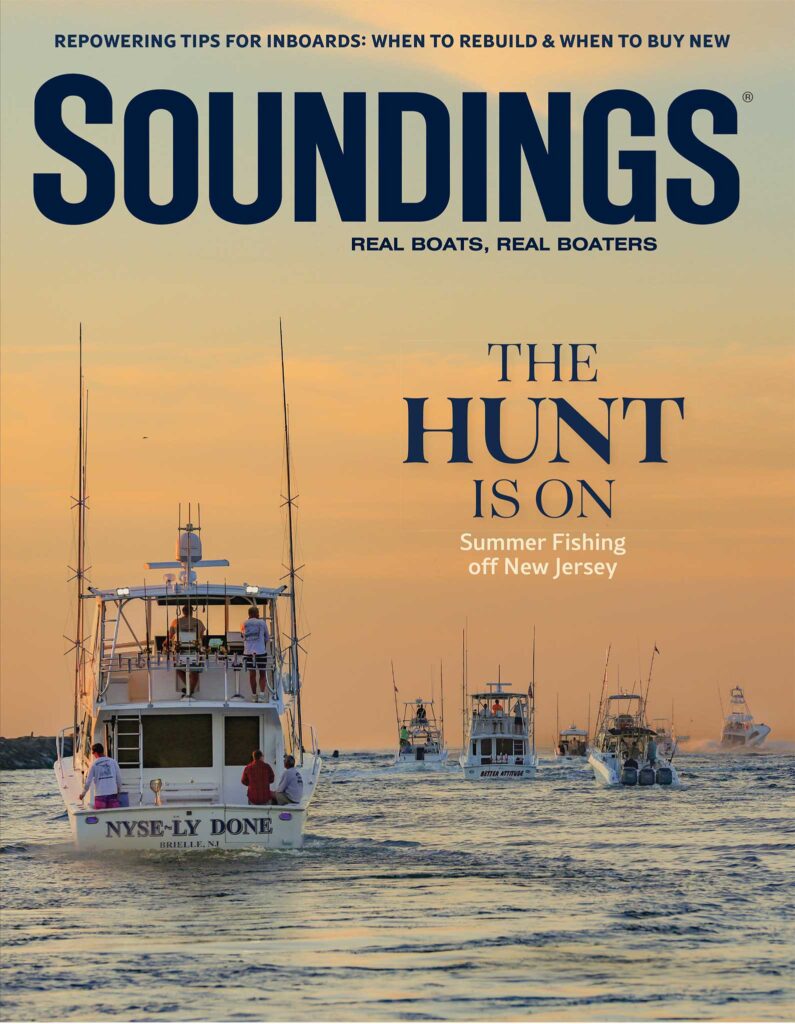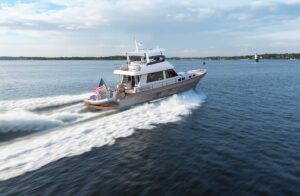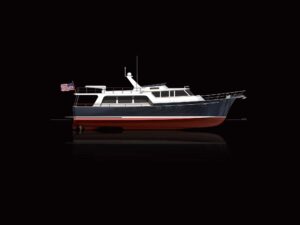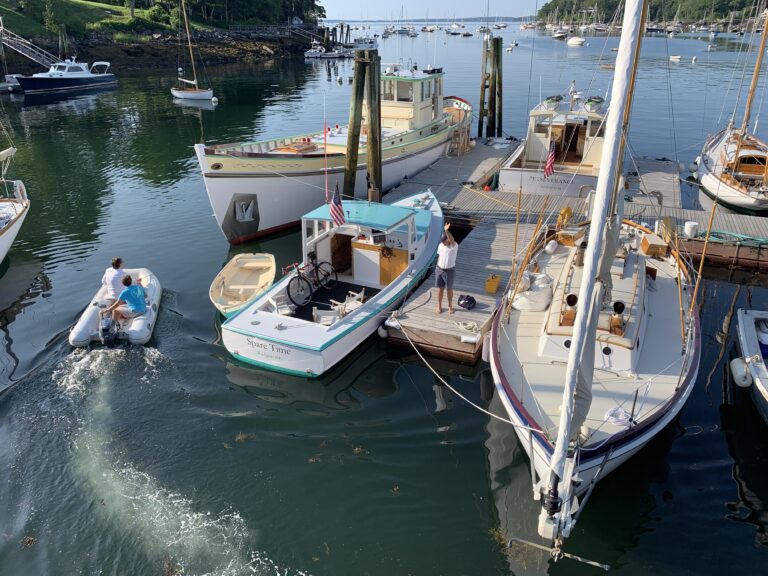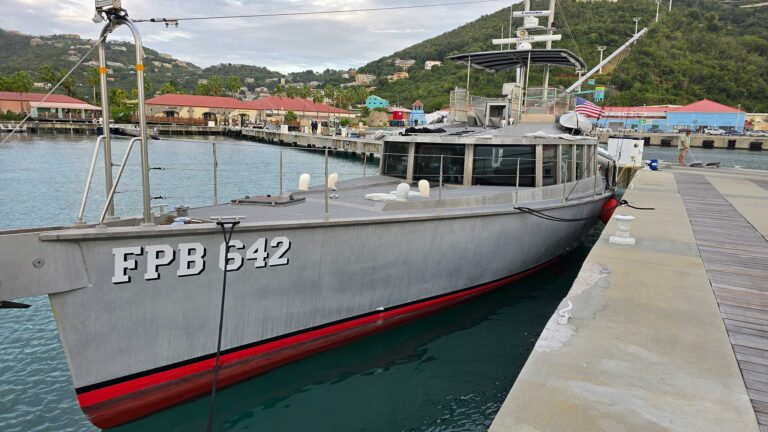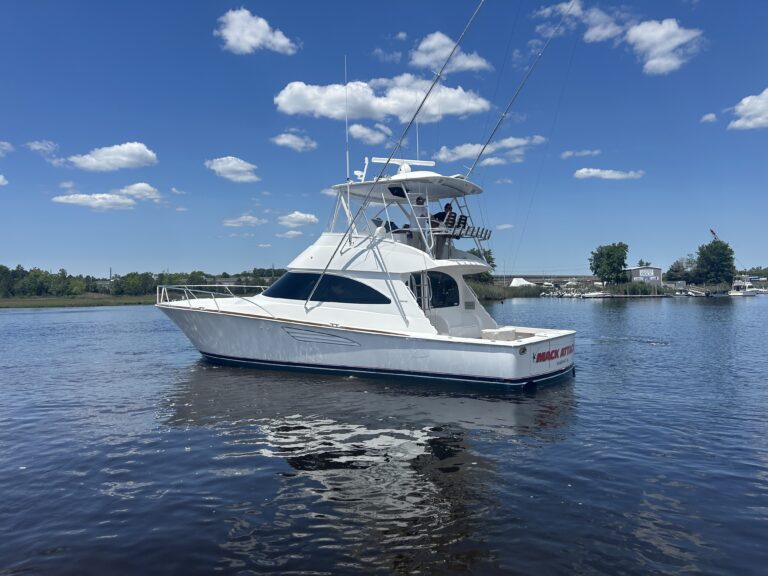Having made a career by boating all my life, I have seen hundreds of models from canoes to yachts come and go. The one boat that I think compares to Noah’s sturdy ark is the Boston Whaler Montauk.
I am a proud owner of a 1985 Boston Whaler 17 Montauk that is amply powered with an equally eager-to-please 90-hp Yamaha outboard. This is my second Boston Whaler. The first was a 17 Tashmoo with an 85-hp Johnson Sea Horse. I purchased the Montauk more than 20 years ago and have repowered it once.
From my Montauk, I’ve caught fish, raked clams, hand-lined blue claw crabs, watched fireworks on summer evenings, visited waterside restaurants, enjoyed romantic evening cruises and taught kids how to dock and drive. Whether it was trips to Treasure Island in New Jersey’s Manasquan River, party time at F-Cove on Barnegat Bay, or ocean runs up the beach to meet friends on the Shark River in Belmar, I never came back to my slip without a smile on my face.
My Montauk is the second generation of the model. Boston Whaler originally introduced the hull in 1961. In 1976, Whaler’s design maven Bob Dougherty remodeled the running surface with a deeper V and sharper entry. He also tailored the outer hull sponsons to create a smirk below the rub rail at the bow.

What makes my Montauk such an ideal boat for me is its inherent simplicity. For starters, the thin inner and outer fiberglass laminates sandwich a dense foam core, making the hull unsinkable. Equally important, it’s self-bailing. I dock my boat in a conventional slip, but I don’t worry much when I have to leave it unattended, or during rain squalls or nor’easters. If the drain plug is removed, outside water pours in until it matches the waterline level outside the hull. Inside the hull, this is perhaps a half inch, so even in a summer downpour. that is all that can collect near the stern. I keep the plug in place and have a small automatic bilge pump, but I don’t have to worry if the battery or pump fails.
The boat’s grippy, molded-nonslip fiberglass sole is safe and easy on bare feet. Another key feature is a molded motor well with two drain plugs, which I remove when I leave the dock. Seawater is quickly evacuated if it spills over the transom while I’m trolling for bluefish or stripers, or drift fishing for doormat fluke in the ocean. Open transoms in other small boats can allow water to flood the cockpit, but this motor well is engineered to collect and drain water in a hurry.
Boston Whaler also gets points for the console design. In the days when my Montauk was built, Whaler was big on the commonality of parts used in its boats. That’s why the helm console on my Montauk is the same design Whaler used in its 18-foot Outrage. There is room for bracket-mounted electronics, a Ritchie PowerDamp compass and a Standard Horizon VHF radio. A tinted acrylic windshield is framed with a sturdy stainless-steel grab rail.
A pair of teak louver doors provides ventilation and access to the interior, which stows five Type 1 PFDs, a toolbox, flares, maintenance supplies, a stern light, a portable horn and sundry items. The Kidde fire extinguisher rests in an easy-to-reach compartment on the starboard side. Forward of the console are six rod holders and an Igloo cooler that doubles as a seat.
The reversible teak helm seat is another work of art with ladderback styling, a pair of rod holders, a pair of grab handles, a built-in rear compartment that stows my blue claw crab measuring stick, sinkers, diamond jigs, a knife and a few hooks. Beneath the helm seat is a pair of 7.5-gallon fuel tanks that supply ample range.
Forward, I removed the bowrail because I dock bow-in, and climbing over the rail was challenging while carrying gear or supplies. A large teak hatch provides safety and surefootedness when getting aboard, and lifts to expose the self-draining anchor locker, Danforth landing gear and 250 feet of nylon rode.

I have covered quite a number of nautical miles aboard my boat, New Attitude. I feel safe in the ocean or just tooling around the river and bay. Some days I go out alone, shut off the Yamaha and enjoy the sounds of the water lapping against the hull. I tease trout-size jacks with lures and light tackle at the inlet sea buoy a mile offshore. I have been caught occasionally in bad weather, and I know that traversing Manasquan Inlet can be a character-building experience of confused waves, wind and tide. My boat handles it all.
It’s true that my Montauk can sometimes be a harsh-riding bronco because of its size and speed. I find that the best way to run it is to stand at the helm with one hand on the wheel and the other on the throttle. Vertical acceleration can be quick, and pulling back the horses helps to ameliorate the ride when conditions dictate.
No matter your boating plans or what kind of boat might be best for you, I believe that any new boat should be as good as or better than what it replaces. I have yet to find a 16-foot, 7-inch boat that can replace my 17 Montauk for the way I use it, which is why I still have it, and probably will for a long time to come.
March 2025

